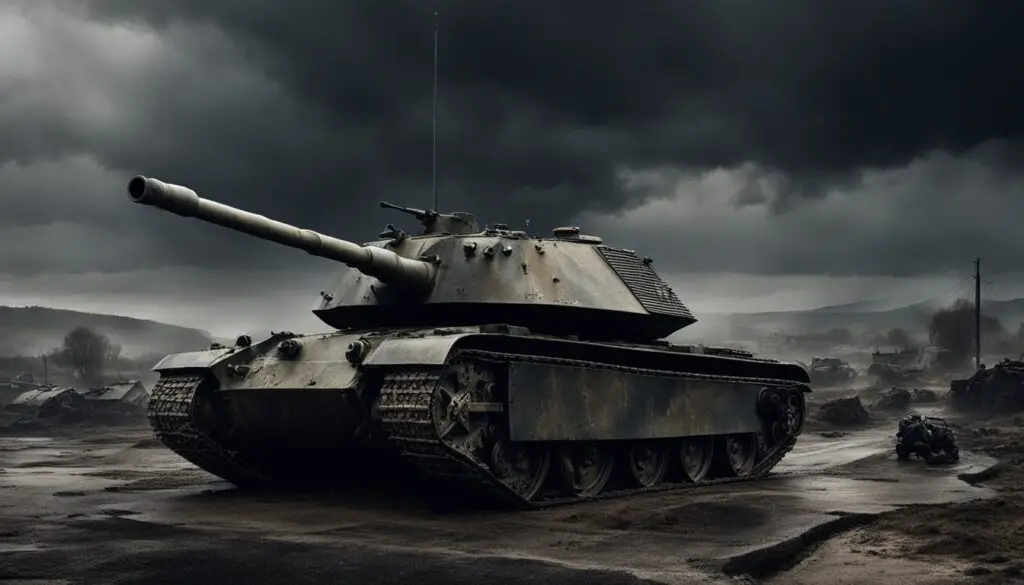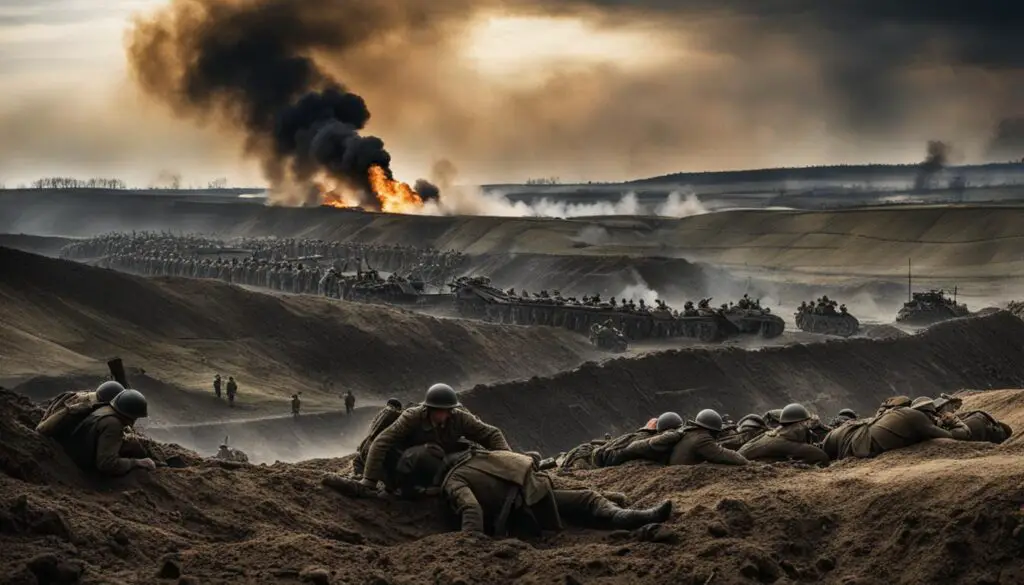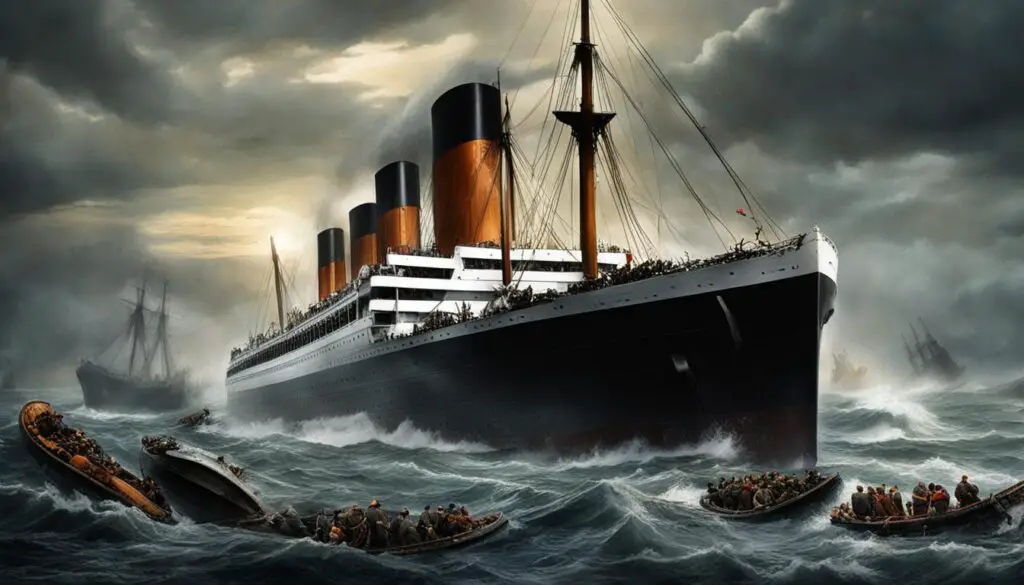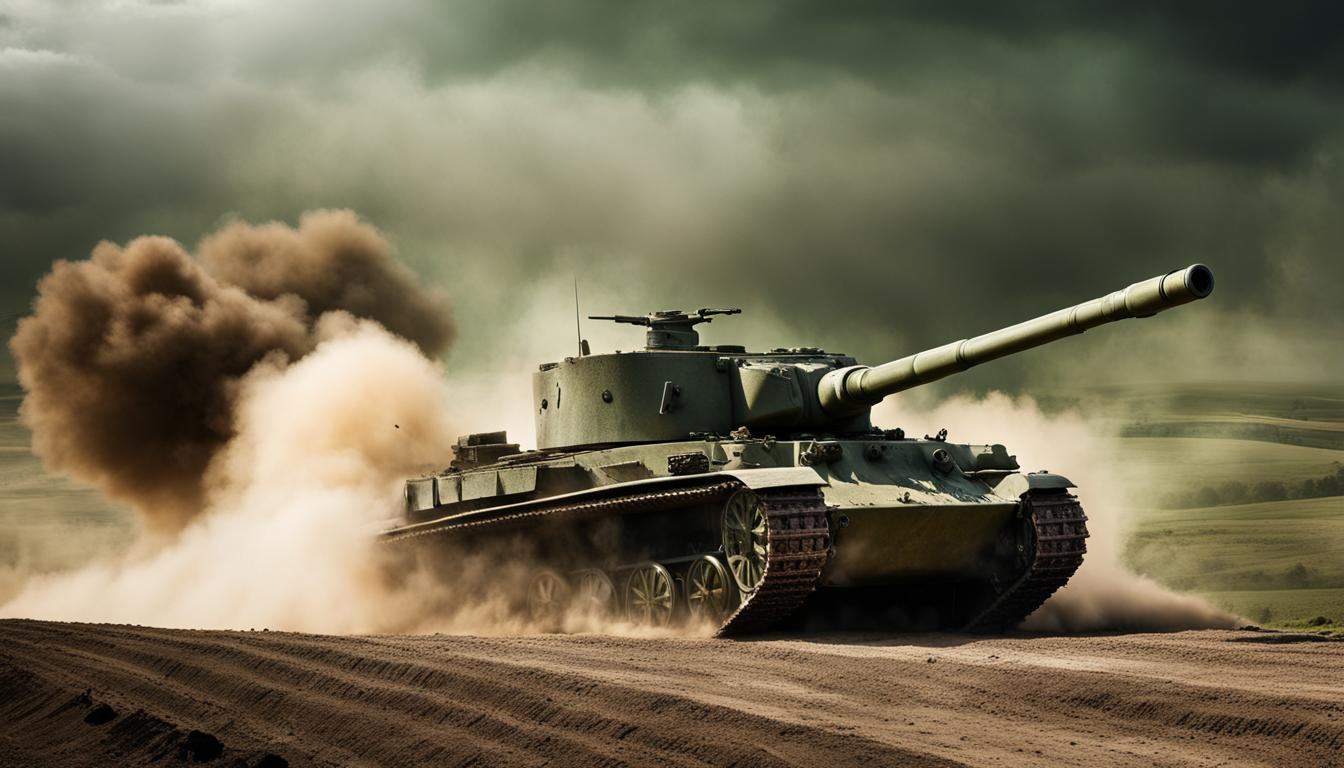World War I, also known as the Great War, was a global conflict that involved many nations and had a profound impact on the course of history. One of the significant developments during this time was the introduction of tanks, which revolutionized armored warfare. In this article, we will delve into the history of WW1 tanks, exploring their impact and influence on the battlefield.
Key Takeaways
- WW1 tanks played a crucial role in breaking the stalemate on the Western Front.
- Technological advancements in tank development during WW1 revolutionized armored warfare.
- The introduction of tanks had a lasting impact on military tactics and strategies.
- WW1 tanks contributed to the fall of empires and the redrawing of borders.
- Archaeological discoveries continue to provide insights into the experiences of soldiers in WW1.
Causes of World War I: Tensions in Europe
The outbreak of World War I was not a sudden event but the culmination of years of tensions and political instability in Europe, particularly in the Balkan region. This volatile situation created a powder keg waiting to explode, and the assassination of Archduke Franz Ferdinand of Austria-Hungary in 1914 became the spark that ignited the war.
In the years leading up to the war, the Balkan region experienced political unrest and territorial disputes. Bosnia, Serbia, and Herzegovina were especially prone to conflicts, threatening the existing alliances between European powers. As the assassination of Archduke Ferdinand unfolded, Austria-Hungary blamed the Serbian government and sought support from Germany, escalating the tensions further.
The Balkan region was the epicenter of these tensions due to its strategic importance and a complex web of alliances. Nationalist movements and ethnic rivalries fueled the conflicts, exacerbating the political instability in the region. This volatile atmosphere ultimately led to the outbreak of World War I, with European powers taking sides and mobilizing their military forces.
In summary, the causes of World War I can be attributed to the tensions in Europe, particularly in the Balkan region, which experienced political instability and territorial disputes. The assassination of Archduke Ferdinand acted as the catalyst that ignited the war, leading to a rapid escalation of conflict. The ensuing geopolitical complexities and the involvement of major powers set the stage for one of the deadliest and most devastating conflicts in human history.

Notable Quote:
“The Balkans is the very essence of political instability.”
The Western Front: Trench Warfare and Devastation
The Western Front during World War I was a theater of brutal trench warfare and devastating battles. As German troops crossed into Belgium and assaulted the city of Liege, the stage was set for a long and grueling conflict. The First Battle of the Marne halted the German advance towards Paris, but it also led to the establishment of a long line of fortified trenches stretching from the North Sea to the Swiss border.
The trenches became the primary defensive structures for both sides, creating a stagnant and deadly battlefield. Soldiers endured unimaginable hardships, from the constant threat of artillery bombardment to the unsanitary conditions that bred disease, like trench foot. Life in the trenches was a constant struggle against enemy attacks and the harsh realities of war.
Trench Warfare on the Western Front: A Hellish War of Attrition
Battles such as the Battle of Verdun and the Battle of the Somme exemplified the horrors of trench warfare. The Battle of Verdun, lasting from February to December 1916, resulted in over 700,000 casualties and no significant territorial gains. The Battle of the Somme, fought from July to November 1916, saw millions of shells fired and over a million casualties. The offensive was intended to break through German lines, but it ultimately resulted in a devastating stalemate.
Trench warfare on the Western Front became a war of attrition, with neither side gaining a decisive advantage. The brutal conditions, constant shelling, and limited mobility made it difficult for either army to gain significant ground. Despite occasional breakthroughs and advancements in tactics, the Western Front remained deadlocked for most of the war, with both sides locked in a deadly struggle for control.

| Battle | Date | Casualties | Outcome |
|---|---|---|---|
| Battle of Verdun | February – December 1916 | Over 700,000 | No significant territorial gains |
| Battle of the Somme | July – November 1916 | Over 1 million | Devastating stalemate |
The relentless trench warfare and devastating battles of the Western Front left an indelible mark on World War I and the soldiers who fought there. The experience of war on the Western Front shaped the narrative of the entire conflict, highlighting the futility and immense human cost of the war. It serves as a stark reminder of the horrors and sacrifices endured by those who were caught in the trenches.
The Eastern Front: Russian Invasions and the Russian Revolution
The Eastern Front during World War I witnessed significant Russian invasions of German-held territories in East Prussia and Poland. These military campaigns played a crucial role in shaping the course of the war and had profound implications for both Russia and the Central Powers.
One of the notable battles on the Eastern Front was the Battle of Tannenberg in August 1914. Despite facing a well-entrenched German army, the Russian forces suffered a major defeat. This setback forced Germany to divert troops from the Western Front to maintain control over the Eastern Front, strategically impacting the overall war effort.
“The Russian Revolution of 1917 marked a turning point on the Eastern Front, leading to Russia’s withdrawal from the war and the signing of an armistice with the Central Powers.”
The Russian Revolution of 1917 marked a turning point on the Eastern Front, leading to Russia’s withdrawal from the war and the signing of an armistice with the Central Powers. The revolution was fueled by mounting discontent among the Russian population, driven by factors such as food shortages, economic hardships, and the heavy casualties suffered on the battlefield.
The Russian Revolution: A Catalyst for Change
The Russian Revolution brought about a significant shift in the political landscape of Russia. The abdication of Tsar Nicholas II and the subsequent rise of the Bolsheviks under Vladimir Lenin led to the establishment of a communist government. This new regime sought to implement radical social and economic reforms, which included the redistribution of land and the nationalization of industry.
The consequences of the Russian Revolution reverberated beyond the Eastern Front. The withdrawal of Russia from the war allowed Germany to redirect its forces and focus on the remaining Allies. It also paved the way for the eventual collapse of the Russian Empire and the emergence of the Soviet Union as a new global power.
| Impact of the Eastern Front | Summary |
|---|---|
| 1. Diversion of German troops | Germany was forced to divert troops from the Western Front in response to Russian invasions on the Eastern Front. |
| 2. Russian Revolution | The Russian Revolution of 1917 led to Russia’s withdrawal from the war, creating a power vacuum in the East. |
| 3. Redrawing of borders | The collapse of the Russian Empire and the establishment of the Bolshevik government resulted in the redrawing of borders and the birth of the Soviet Union. |
The Eastern Front played a vital role in World War I, with Russian invasions and the subsequent revolution altering the course of the conflict. The impact of these events extended far beyond the battlefield, reshaping both the geopolitical landscape and the destiny of Russia itself.
America’s Entry into World War I: The Lusitania and Submarine Warfare
The United States initially adopted a policy of neutrality in World War I, but events soon unfolded that would push the country towards entering the conflict. One such event was the sinking of the British ocean liner Lusitania by a German submarine in 1915. The Lusitania was carrying American passengers, and the attack resulted in the loss of 128 American lives. This incident caused outrage among the American public and shifted public opinion against Germany.

The sinking of the Lusitania brought the issue of unrestricted submarine warfare to the forefront. Germany’s policy of targeting any ships, including civilian vessels, caused significant concern for the United States. This act violated the principle of freedom of the seas and endangered American lives. The incident served as a tipping point that increased support for the United States’ entry into World War I.
In 1917, Congress passed an arms appropriations bill, signaling the nation’s growing determination to support the Allied powers and counter the aggression of the Central Powers. President Woodrow Wilson, recognizing the need to protect American interests and ensure peace, called for a declaration of war against Germany. This marked America’s official entry into World War I, a conflict that would have far-reaching consequences for the nation and the world.
Impact of World War I on the Landscape: Archaeological Discoveries
World War I had a profound impact on the European landscape, transforming it in ways that are still visible today. Archaeologists have utilized aerial photographs and modern imaging techniques to study the physical remnants left behind by the war, shedding light on the experiences of soldiers and the challenges they faced.
The most significant archaeological discoveries from World War I are the traces of trenches that crisscrossed the battlefield. These trenches were vital for soldiers’ survival and provided protection from enemy fire. Excavations have revealed the complex construction methods employed to fortify the trenches, as well as the harsh living conditions soldiers endured, such as waterlogged environments and the constant threat of trench foot.
Archaeological findings offer a unique glimpse into the day-to-day lives of soldiers during World War I. They allow us to reconstruct the landscape as it existed during the conflict and provide valuable insights into the strategies and tactics employed by both sides.
In addition to trenches, archaeologists have also discovered the remains of artillery emplacements, bunkers, and craters caused by intense bombardment. These findings highlight the devastating impact of artillery fire on the landscape and the extent of destruction caused by the war. The scars left behind by World War I serve as a somber reminder of the human cost of armed conflict.
| Archaeological Discoveries | Description |
|---|---|
| Trenches | Traces of trenches provide insights into soldiers’ experiences and construction methods. |
| Artillery Emplacements | Remains of artillery positions highlight the destructive power of artillery fire. |
| Bunkers | Discoveries of bunkers reveal the defensive strategies employed by both sides. |
| Craters | Craters caused by bombardment showcase the extent of destruction on the landscape. |
These archaeological findings contribute to our understanding of World War I and its lasting impact. They allow us to honor the memory of those who fought and provide a tangible connection to the past, ensuring that the lessons learned from this devastating conflict are not forgotten.

Technological Advancements in WW1 Tanks
The First World War witnessed significant technological advancements in the development of tanks, which revolutionized armored warfare. These early tanks were specifically designed to overcome the challenges posed by trench warfare, providing much-needed armored protection and mobility on the battlefield.
One such technological advancement was the introduction of caterpillar tracks, which allowed tanks to navigate difficult terrains and overcome obstacles such as trenches and barbed wire. This innovation greatly increased their mobility and effectiveness in combat.
Another significant development was the improvement in armor protection. Tanks were equipped with thick steel plates that offered resistance against small arms fire and shrapnel. This enhanced protection allowed them to withstand enemy fire and operate in hostile environments.
Furthermore, the introduction of powerful engines enabled tanks to achieve greater speeds and maneuverability on the battlefield. These engines, coupled with advancements in transmission systems, provided tanks with increased power and reliability.
Overall, the technological advancements in WW1 tanks played a crucial role in breaking the stalemate on the Western Front and influencing the outcome of battles. They paved the way for further developments in armored vehicles and shaped the future of modern warfare.
Military Manufacturing and Logistics in World War I
World War I brought about a significant increase in military manufacturing and the development of complex supply chains to support the war effort. As nations mobilized their forces, the demand for tanks and other military vehicles soared. Manufacturing facilities worked tirelessly to meet the growing need for armored vehicles, contributing to the unprecedented scale of production during the war. The advancements in tank manufacturing during this period propelled the evolution of armored warfare.
The logistics of supplying troops and equipment on the front lines presented enormous challenges. Transportation networks had to be established and expanded to ensure a steady flow of resources. Railways played a crucial role in transporting heavy machinery and supplies to the battlefront. Additionally, new technologies like motorized vehicles and airplanes were employed to expedite the delivery of essential resources.
To illustrate the scale of military manufacturing and logistics during World War I, consider the following table:
| Country | Tanks Manufactured | Military Vehicles Produced |
|---|---|---|
| Germany | 2,700 | 56,000 |
| United Kingdom | 1,600 | 80,000 |
| France | 3,000 | 62,000 |
| Russia | 201 | 12,000 |
| United States | 84 | 10,000 |
(Source: Image source)
This table provides a glimpse into the manufacturing capabilities of major nations during World War I. It is important to note that these numbers represent the production during the entire war, necessitating extensive logistical operations to transport the manufactured tanks and military vehicles to the front lines. The scale of manufacturing and logistics involved highlights the immense resources and coordination required to sustain the war effort.
Conclusion
World War I was a pivotal moment in military history, forever changing the nature of warfare. One of the most significant advancements during this time was the introduction of tanks, which revolutionized armored warfare. These powerful machines provided both protection and mobility on the battlefield, breaking the stalemate on the Western Front and influencing the outcome of battles.
The impact of World War I extended far beyond the battlefield. The war led to the fall of empires and the redrawing of borders, reshaping the geopolitical landscape. The remnants of this conflict, both physical and historical, continue to provide valuable insights into the experiences of soldiers and the lasting effects of the war.
From a military history perspective, World War I demonstrated the importance of adapting and innovating in the face of new challenges. The development of tanks and the evolution of tank warfare paved the way for future advancements in armored vehicles and tactics. The lessons learned from this conflict continue to shape military strategies and technologies to this day.
FAQ
What triggered the outbreak of World War I?
The assassination of Archduke Franz Ferdinand in Sarajevo, Bosnia.
Which countries were involved in the Western Front?
Germany, Belgium, and France.
What was the nature of warfare on the Western Front?
Trench warfare characterized by brutal battles and high casualties.
What was the Eastern Front?
The Eastern Front involved Russian forces invading German-held territories.
How did the United States become involved in World War I?
The sinking of the British ocean liner Lusitania and Germany’s unrestricted submarine warfare shifted American public opinion and led to a declaration of war.
What physical remnants of World War I can still be seen today?
Traces of trenches, craters, and other war-related features are still visible in parts of Europe.
How did tanks impact World War I?
Tanks revolutionized armored warfare and played a crucial role in breaking the stalemate on the Western Front.
How did World War I affect military manufacturing and logistics?
The war led to an increase in military manufacturing and the development of supply chains to support the war effort.
What was the lasting impact of World War I?
World War I had a significant impact on the geopolitical landscape and led to the fall of empires and redrawing of borders.
Source Links
- https://www.history.com/topics/world-war-i/world-war-i-history
- https://www.nationalgeographic.com/history/article/archaeology-unravels-secrets-wwi-trench-warfare
- https://www.onmilitarymatters.com/dfcatalog.php?period=1914
